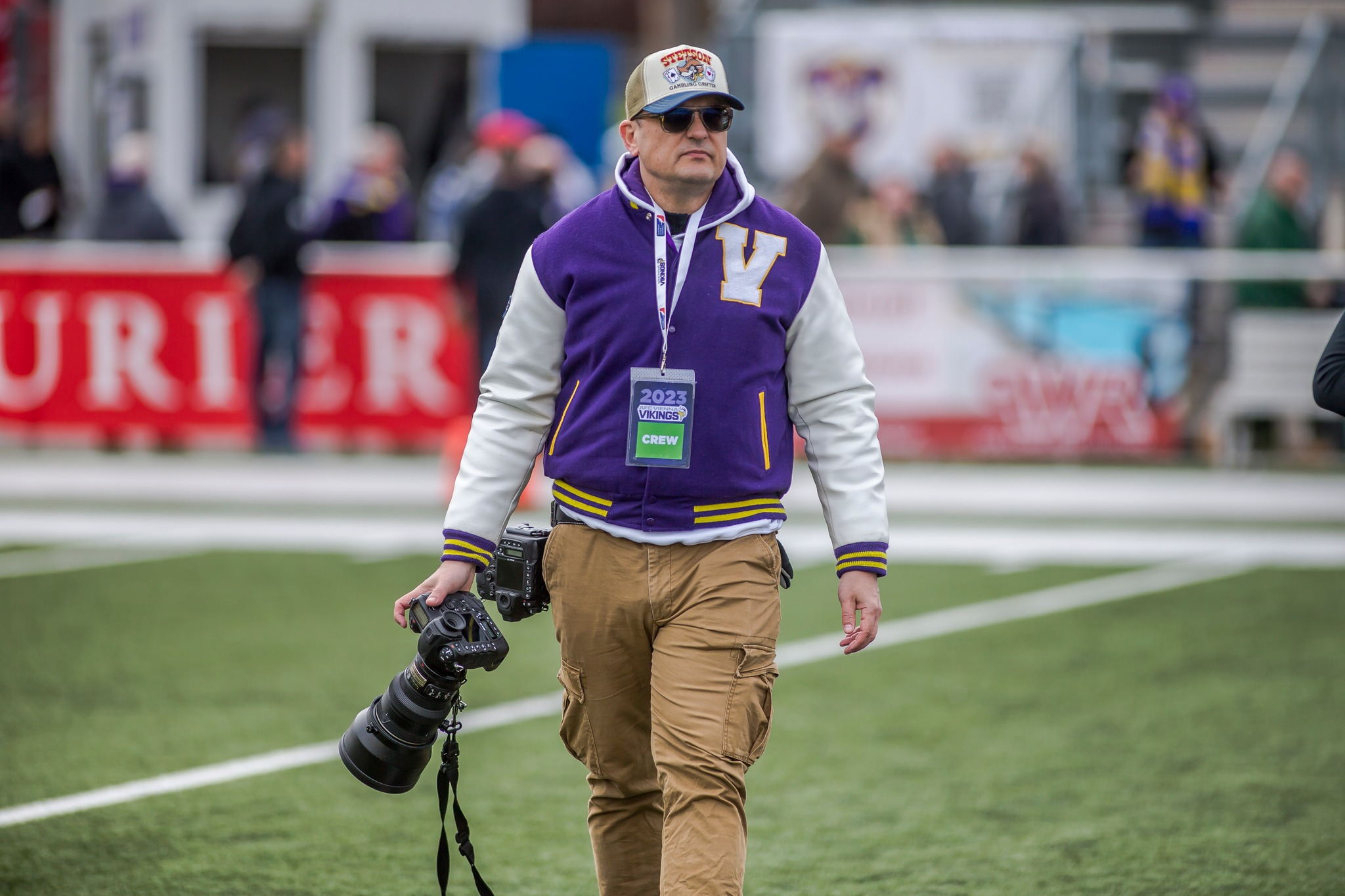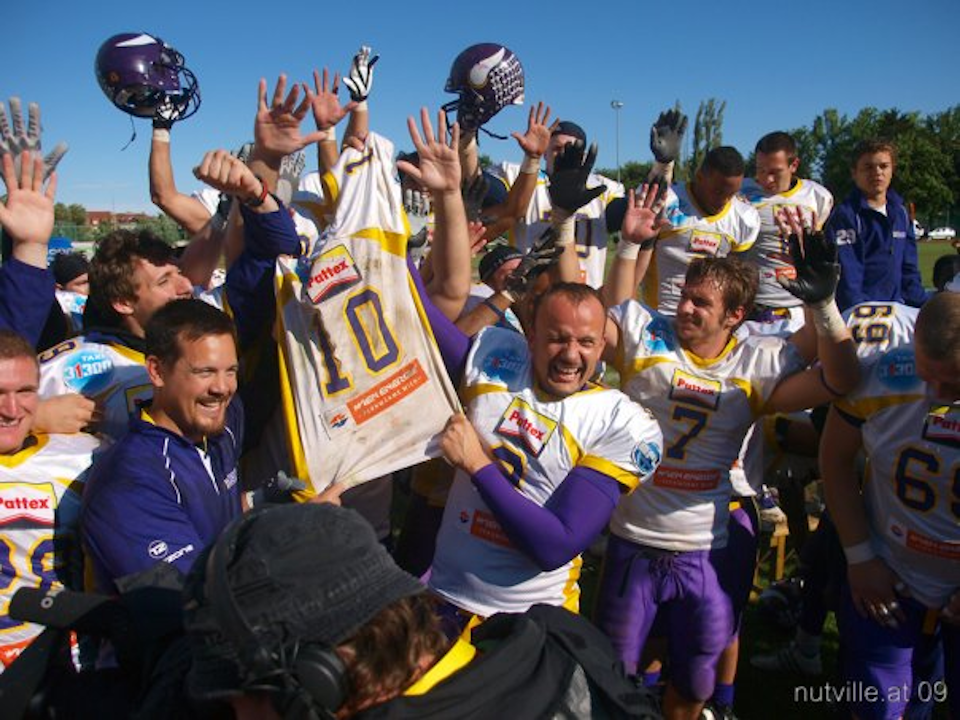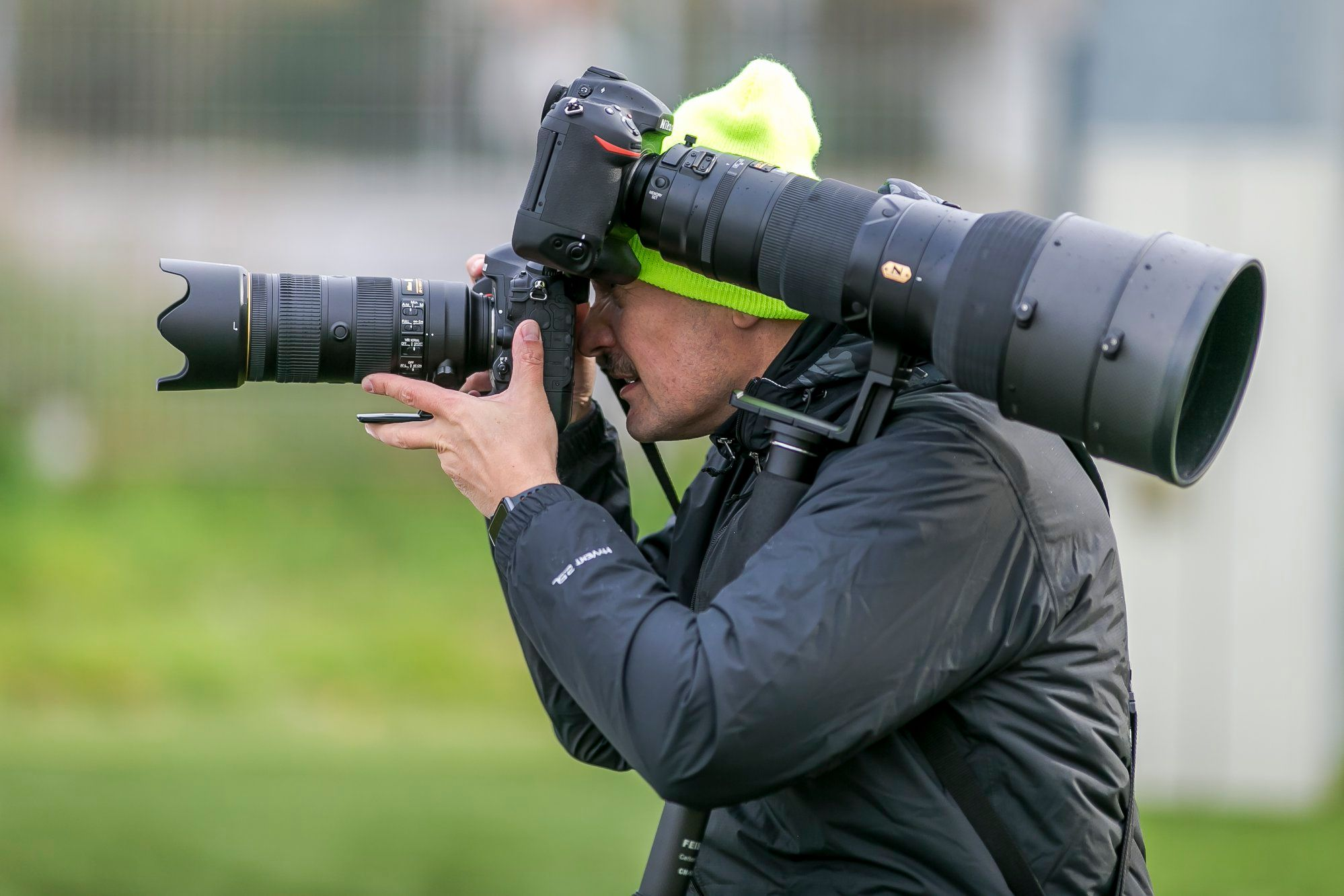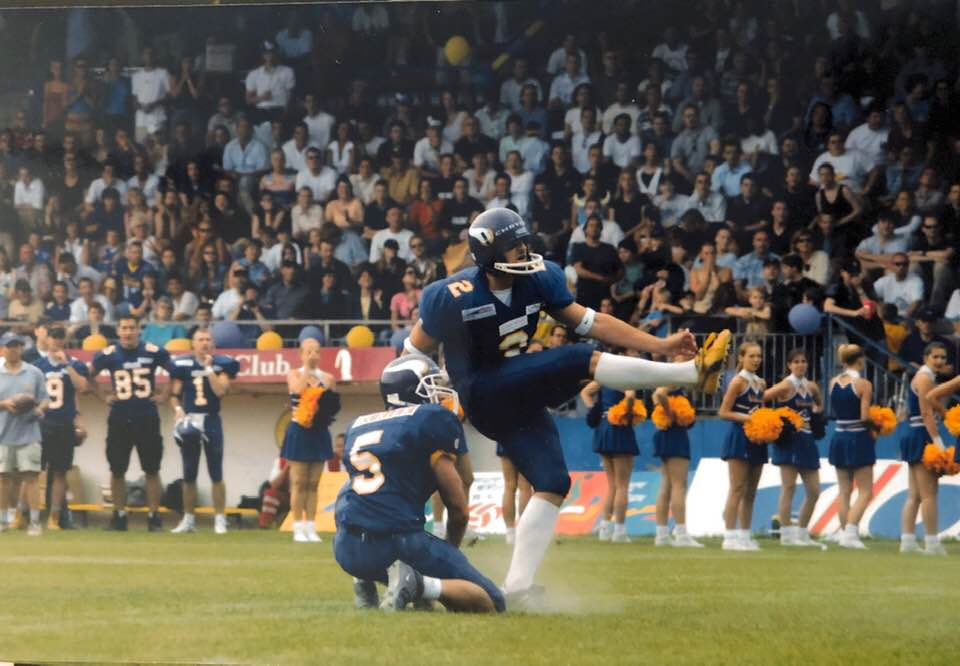Austria’s Peter Kramberger continues to contribute to the game he loves through the lens

If you are looking for world class photographs of football in Austria you need look no further than a page filled with action shots taken by former kicker turned photographer, Peter Kramberger.
Although life started out on the field, the former Vienna Viking and Team Austria kicker as well as Guiness Record Book inductee, has transformed his illustrious playing career into a successful photography sideline, helping grow the sport through his camera lens.
In a fascinating interview, Kramberger relates how he finished his career as a player only to return to the sideline as a photographer.
AFI: You were a player first. When and how did you get into photography?
Kramberger: After the end of my very successful career with the Vienna Vikings, the national team and Southern Oregon University, I was not only inducted into the Guinness Book of Records, but also into the Austrian Football Hall of Fame.
I started photographing at an early age although back then it was more landscape and street photography. After my career, I wanted to find a way to be closer to the team and, with the help of our team photographer and long-time friend Hannes Jirgal, I decided to go into sports photography. And so it all began.

Peter Kramberger celebrating Austrian Bowl win with HC Chris Calaycay and rest of Vienna Vikings
AFI: What attracted you to the game?
Kramberger: As a teenager i bought an American football magazine that had an article about the Austrian Toni Fritsch, kicker for the Dallas Cowboys. As luck would have it, I got to know him years later through a schoolmate who encouraged me to play football and I learnt how to kick from him.
AFI: Is photography your full-time job?
Kramberger: Photography is purely a hobby of mine. I am the managing director of a family office of a foundation.

Photo: Hannes Jirgal
AFI: What is the most satisfying aspect of your ‘job’ as a photographer?
Kramberger: Photography is an art and a passion. American football offers a lot of passion, but also sometimes art, such as catching a ball that is almost impossible to catch, etc. There is also so much passion and emotion involved in the sport, not only from the players, but also from the coaches, physios and last but not least the audience, which are more than worth capturing and recording. And sometimes it’s not just the scenes of joy, but also the scenes after a lost game.
AFI: Do you take a different approach when photographing American football games?
Kramberger: Every game and every stadium has its own rules and I prepare myself very professionally for the games. Which cameras and lenses do I need, where is the sun coming from, which scenes and players do I want to focus on in particular? I try to capture a story of the whole gameday with my cameras and document it.
AFI: Tell us a little bit about a typical game day.
Kramberger: The cameras, lenses and other equipment are prepared the day before the match. All the batteries have to be charged, the memory cards formatted, and I prepare the corresponding folders on the PC.
On match day, the first thing I do is check the weather forecast – sun, rain, etc. – to adjust the camera settings correctly and pack the right gear. I’m usually at the stadium 3-4 hours before the game, set up in the press area and then I’m ready to go.
The first pictures of the fans are uploaded before the warm-up, during the break the first match scenes and after the match I go home to do the final editing, usually all night.

Peter Kramberger #2
AFI: How many photos do you usually take at a game/event?
Kramberger: I usually take between 2,000 and 3,000 pictures per game when I have 3 cameras in use.
AFI: Tell us about a couple of memorable experiences you have had photographing games.
Kramberger: As I’m very focussed on match day, there aren’t that many moments that impress me. These usually only come when I’m editing the pictures. Of course, I get a little excited when the Vienna Vikings play, especially when they are in a final. But here it’s my job to take the best possible picture. I don’t always succeed, but when I do, I’m very happy when it’s a one-handed catch, a touchdown run where you can see the offensive line blocking, the cheering of the coaches or the fans in each other’s arms. And last but not least, when the Vikings captains hold up the trophy.
AFI: How do you see the growth of American football in Austria and Europe?
Kramberger: By installing the ELF, in my opinion, European football has taken a step in the right direction. Many more clubs are trying to improve their programs to give players the incentive to play at the top. In addition, more and more players are being sent to high schools and then go on to a US college. If players like Bernhard Raimann are drafted, it will be a game changer for the young talent. We just can’t stop working constantly, supporting young people even more, training coaches and keeping football permanently public in the media. I hope that our photos and videos can make a small contribution to making our sport look even better in the media.
In our continuing series about the photographers who diligently cover our game throughout Europe, we have previously interviewed Germany’s Sarah Philipp, Finland’s Jari Turunen, Italy’s Gioli Busi, Lola Morales from Spain, Denmark’s Mikkel Bo Rasmussen, Michael Freitag also from Germany, Austria’s Hannes Jirgal, Sergio Brunetti (Switzerland) as well as Stefan Akander and Jonas Domfors from Sweden.